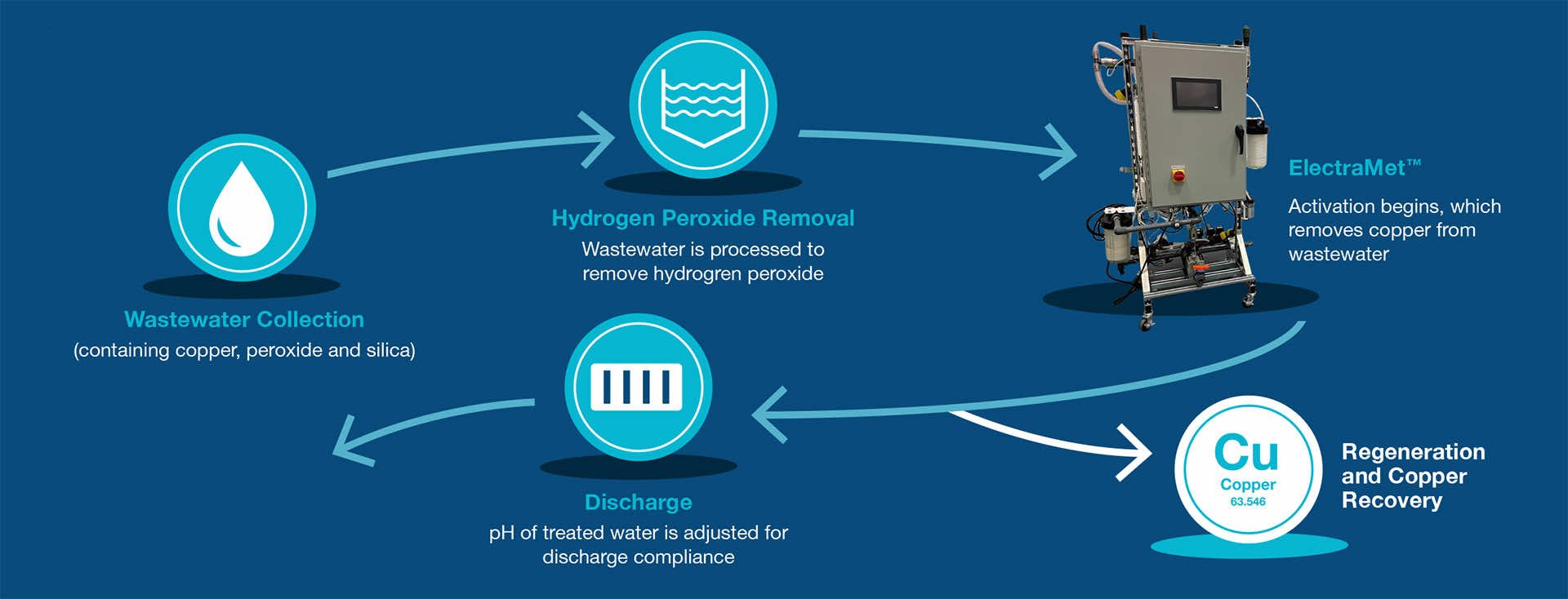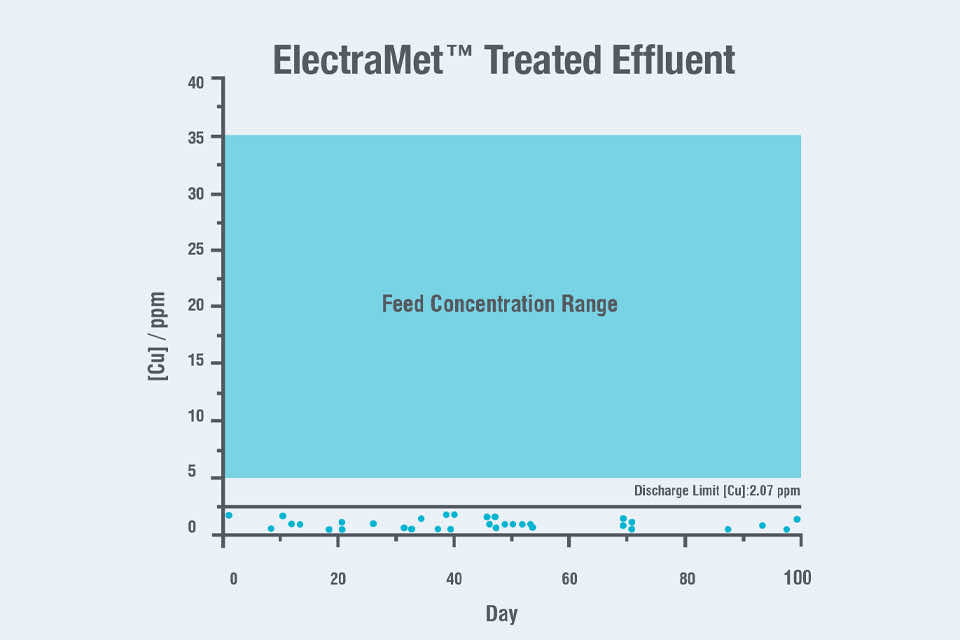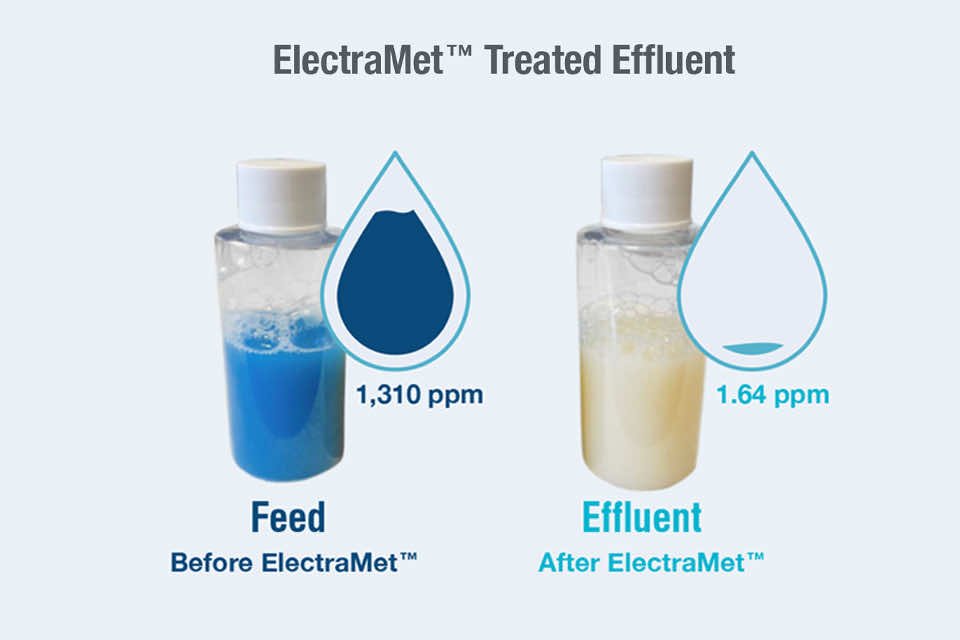Background
Copper chemical-mechanical planarization (CuCMP) is a fabrication technique that uses chemical oxidation and mechanical abrasion to remove copper from wafers and achieve high planarity. Semiconductor technology foundries use CMP as a critical process in the production of wafers. This process produces a complex copper bearing wastewater containing a mixture of hydrogen peroxide, organics, and silica that complicates treatment options.
Summary Highlights
- Industry: Microelectronics
- Application: CMP slurry wastewater treatment
- Technology: ElectraMet M-Series
- Selective copper removal from complex CuCMP slurry wastewater
- Automated process for simplified operation
- Recovery of copper as high purity sheets
Expensive to ship offsite for disposal
Complicated waste stream requires treatment to meet EPA compliance
Onsite treatments are burdensome
The Challenge
Treatment of copper and peroxide-bearing CMP wastewater is complicated and often requires offsite disposal by a third party treatment facility. This is an expensive solution that does not suit large operations. The presence of silica, hydrogen peroxide, and chelators make removal of the copper using traditional chemical precipitation and ion-exchange methods difficult and complicated. In order to reliably remove the copper, a large amount of pre-treatment is required, which adds further complexity for the end user.
The Solution
ElectraMet™ is an electrochemical system for targeted metals removal from process and wastewater streams. Our system uses an automated process to treat CuCMP wastewater directly at the customer site for a fraction of the cost of off-site disposal and with minimal operator interaction.
By electrochemically removing and recovering copper, ElectraMet™ has proven to be a simple and efficient on-site solution for CuCMP wastewater treatment, even in the presence of other chemicals.
ElectraMet™ does not rely on chemicals for its treatment (other than acid and base adjustments in some circumstances), the overall operation is simpler, and the footprint is much smaller, than other on-site options.
Affordable & sustainable treatment and recovery of copper
Meet EPA compliance
Simple automated process
Proven Results: Case Study 1
The waste slurry stream generated from a CuCMP process at a semiconductor facility contained 5 ppm – 35 ppm copper, 500 ppm – 1500 ppm hydrogen peroxide, and varying amounts of organic chelators. This facility has a permit limit of 2.07 ppm for copper discharge. The ElectraMet process was successful in reliably meeting and exceeding discharge compliance for over 1 year of continuous operation. As an added benefit, the copper can be recovered as a high purity copper sheet.
Hydrogen peroxide and organic chelators complicate copper removal with traditional methods such as ion-exchange but showed no negative impact on the robust ElectraMet system. Bulk hydrogen peroxide is removed upstream using proprietary media, and the ElectraMet cartridge removes any residual peroxide along with the copper. Organic chelators had no long-term negative effect on ElectraMet’s ability to remove and recover the copper.
Proven Results: Case Study 2
A semiconductor foundry tested a new CuCMP slurry formulation to achieve faster polishing rates. The new slurry formulation had elevated amounts of silica and organic chelators, and the higher polishing rates yielded more concentrated copper in the waste stream, generating a more complicated wastewater to treat. The ElectraMet process was able to reduce the copper content from 1,310 ppm to 1.64 ppm. The elevated levels of organic chelators and silica showed no inhibition of ElectraMet to remove and recover the copper.



